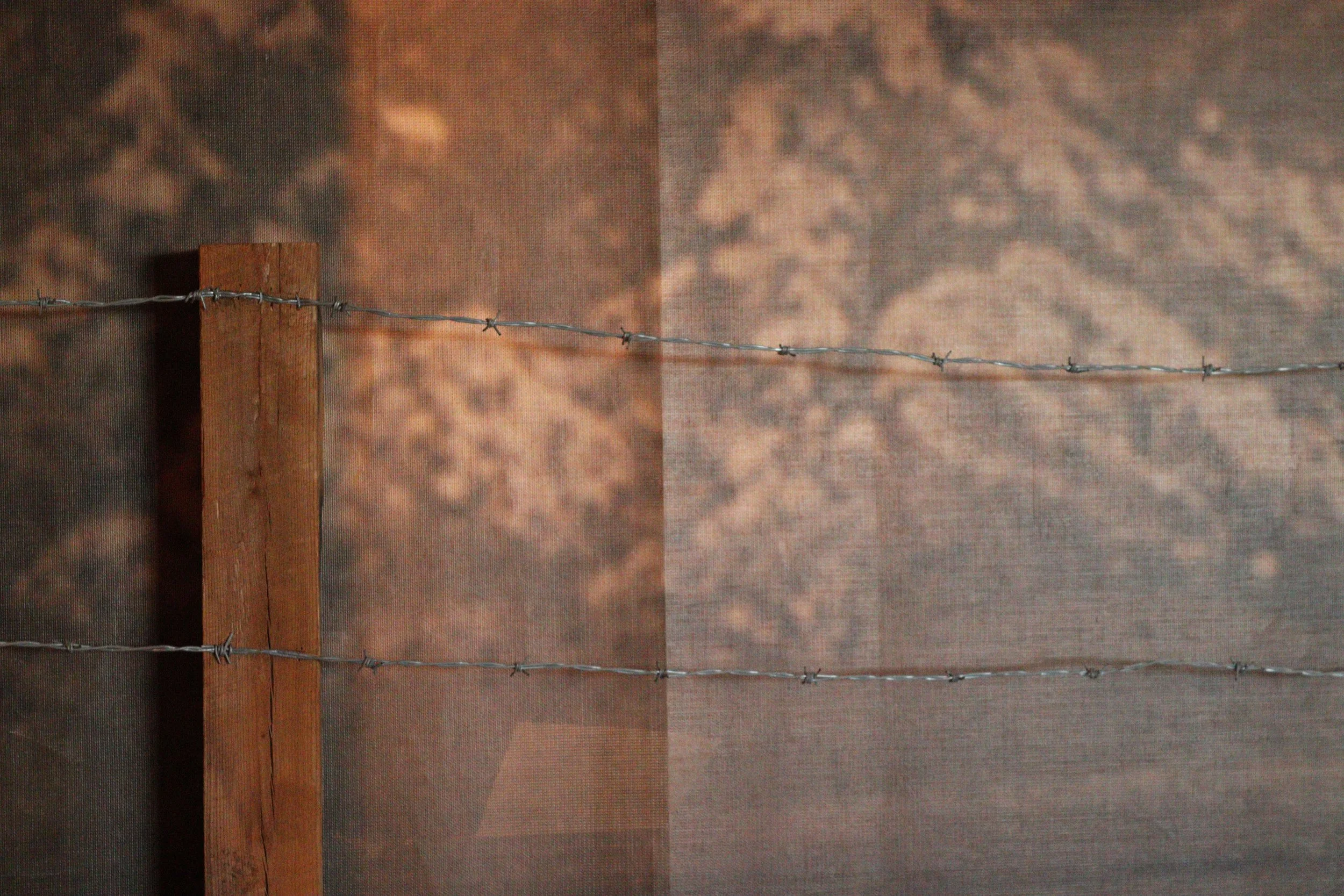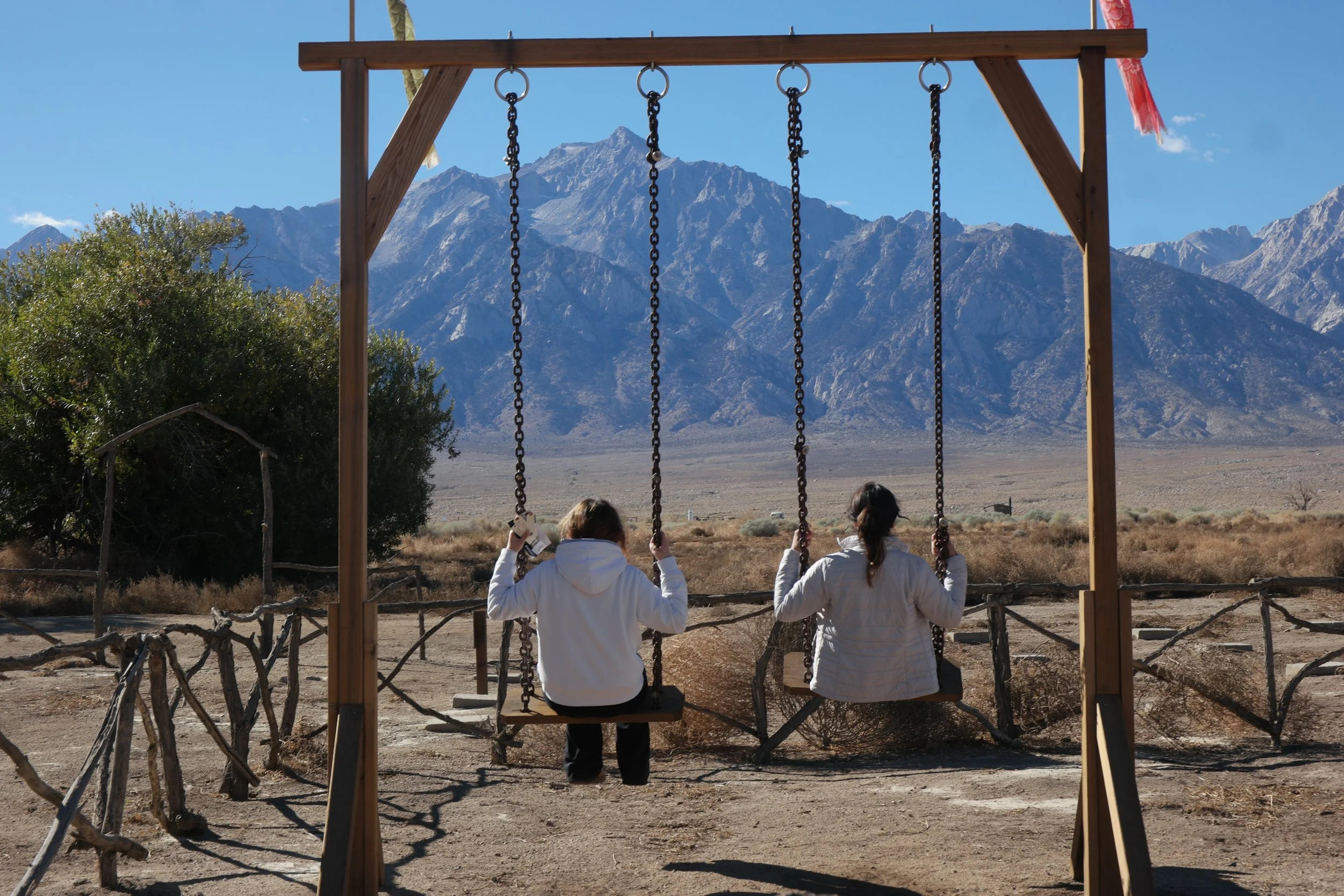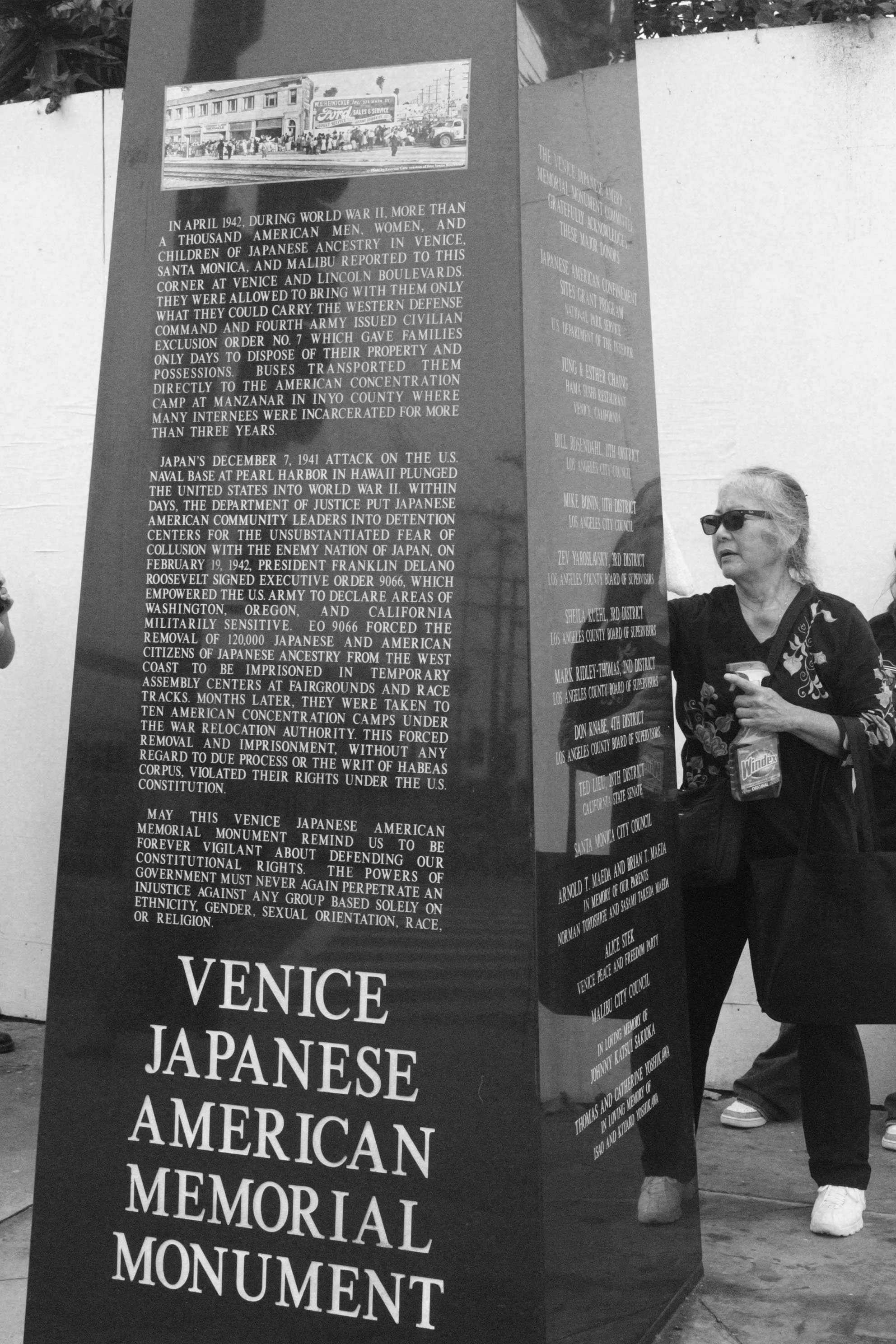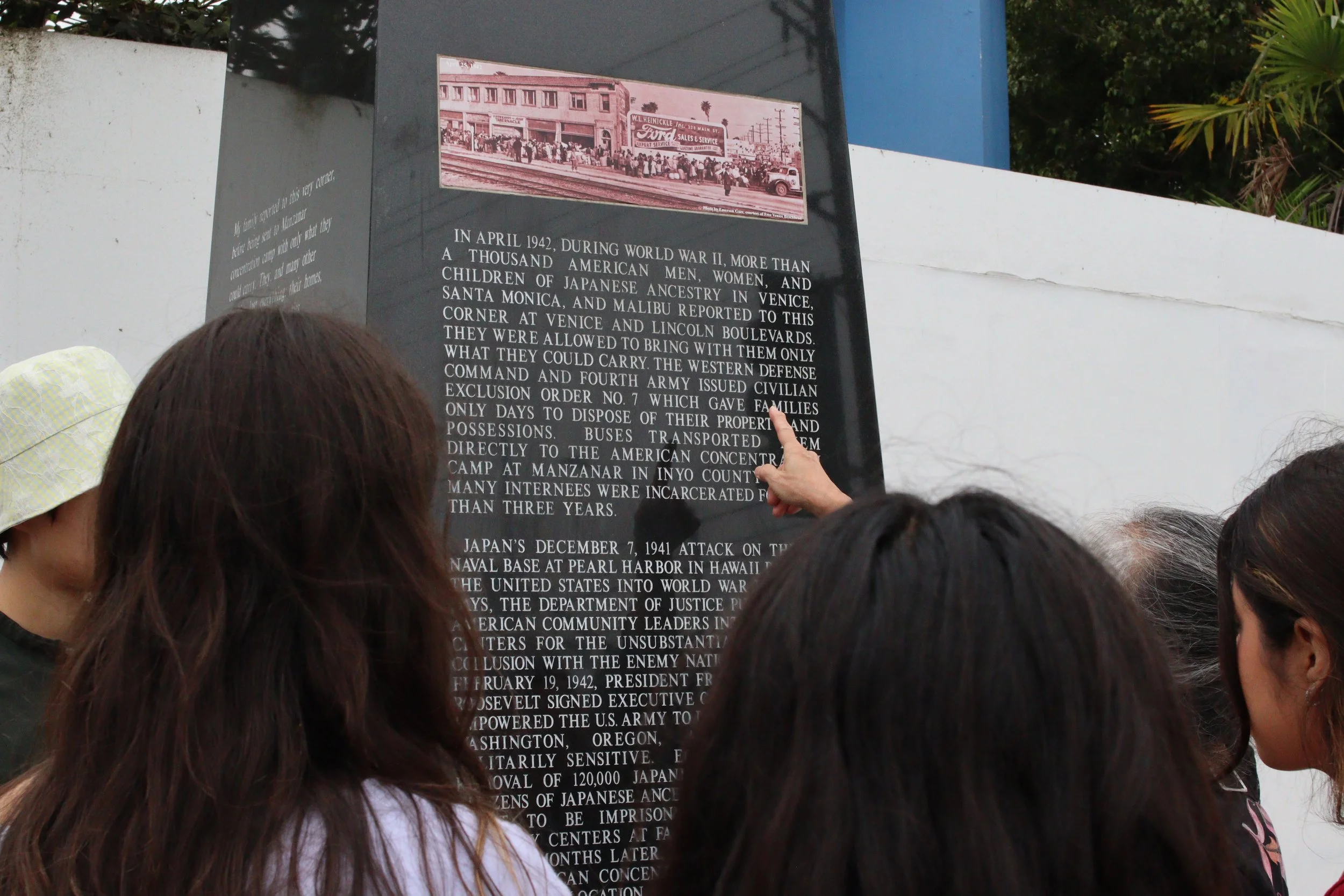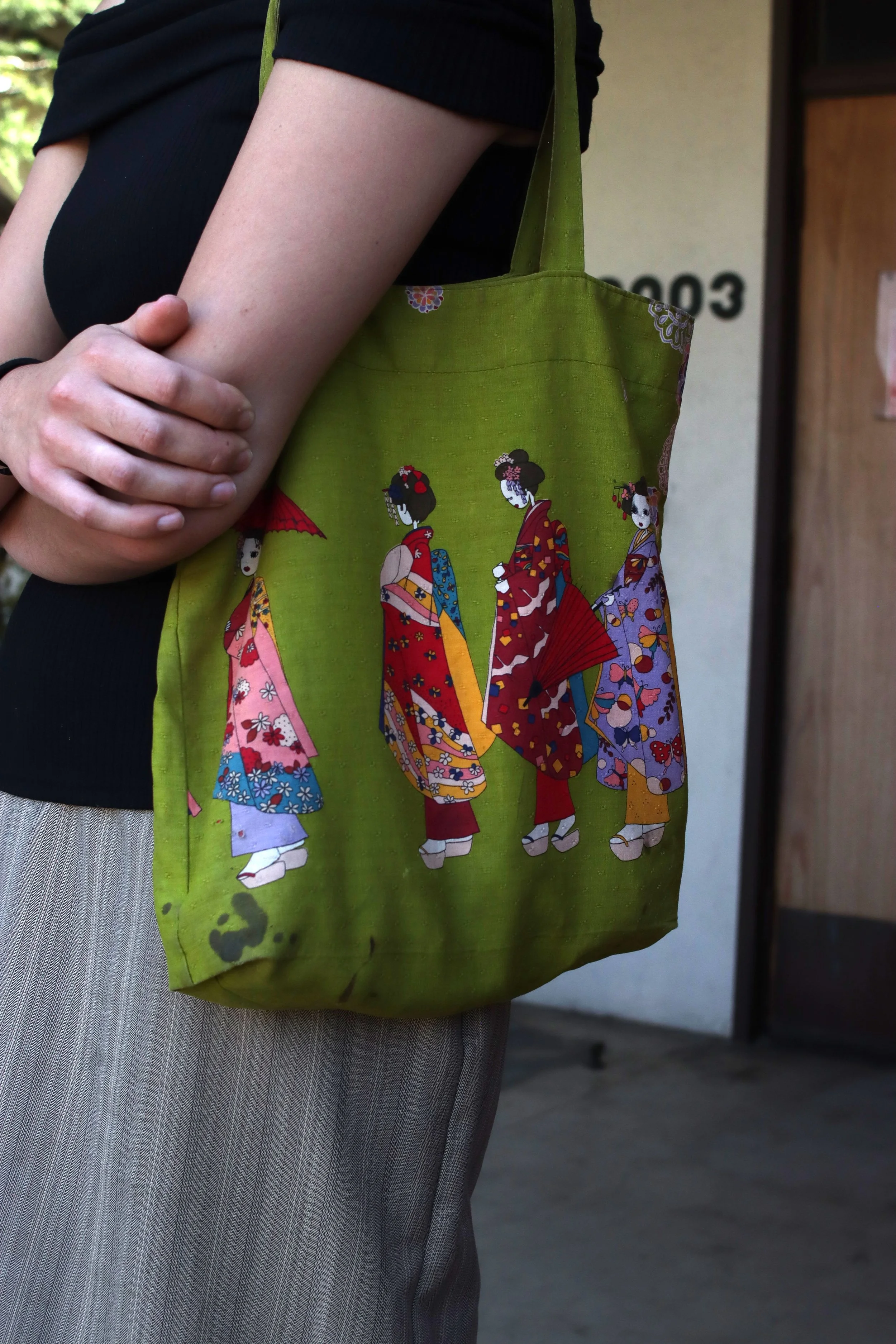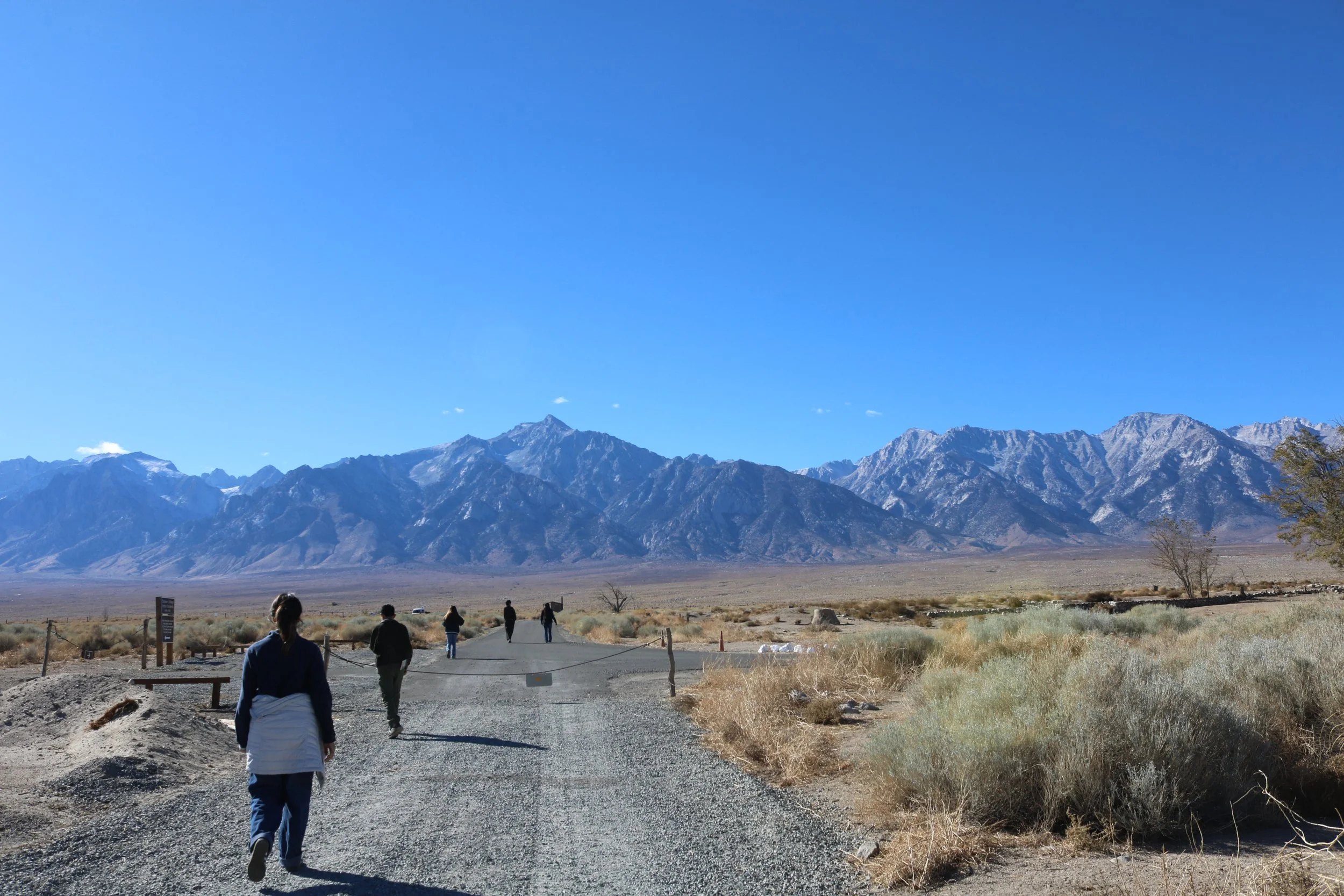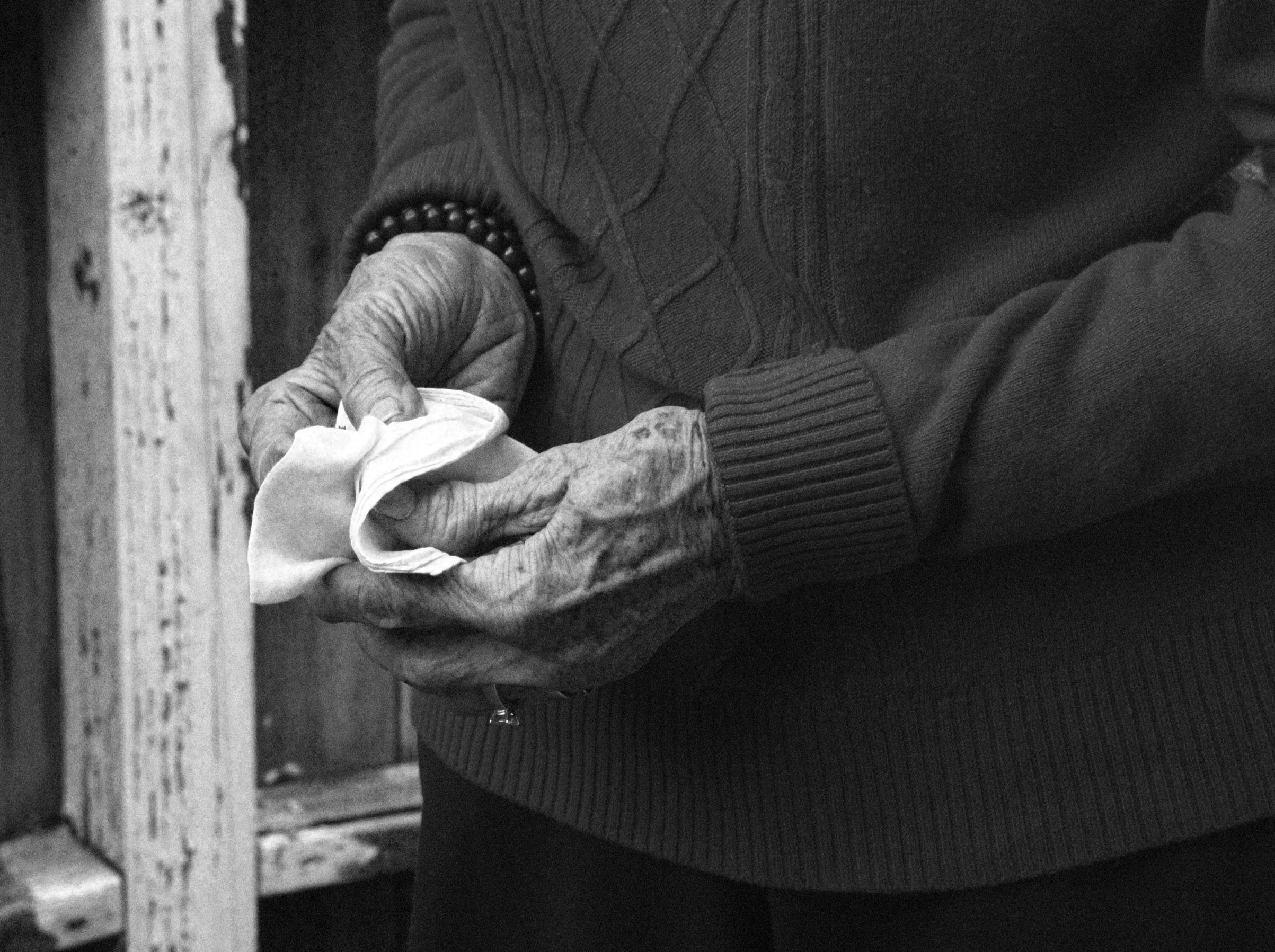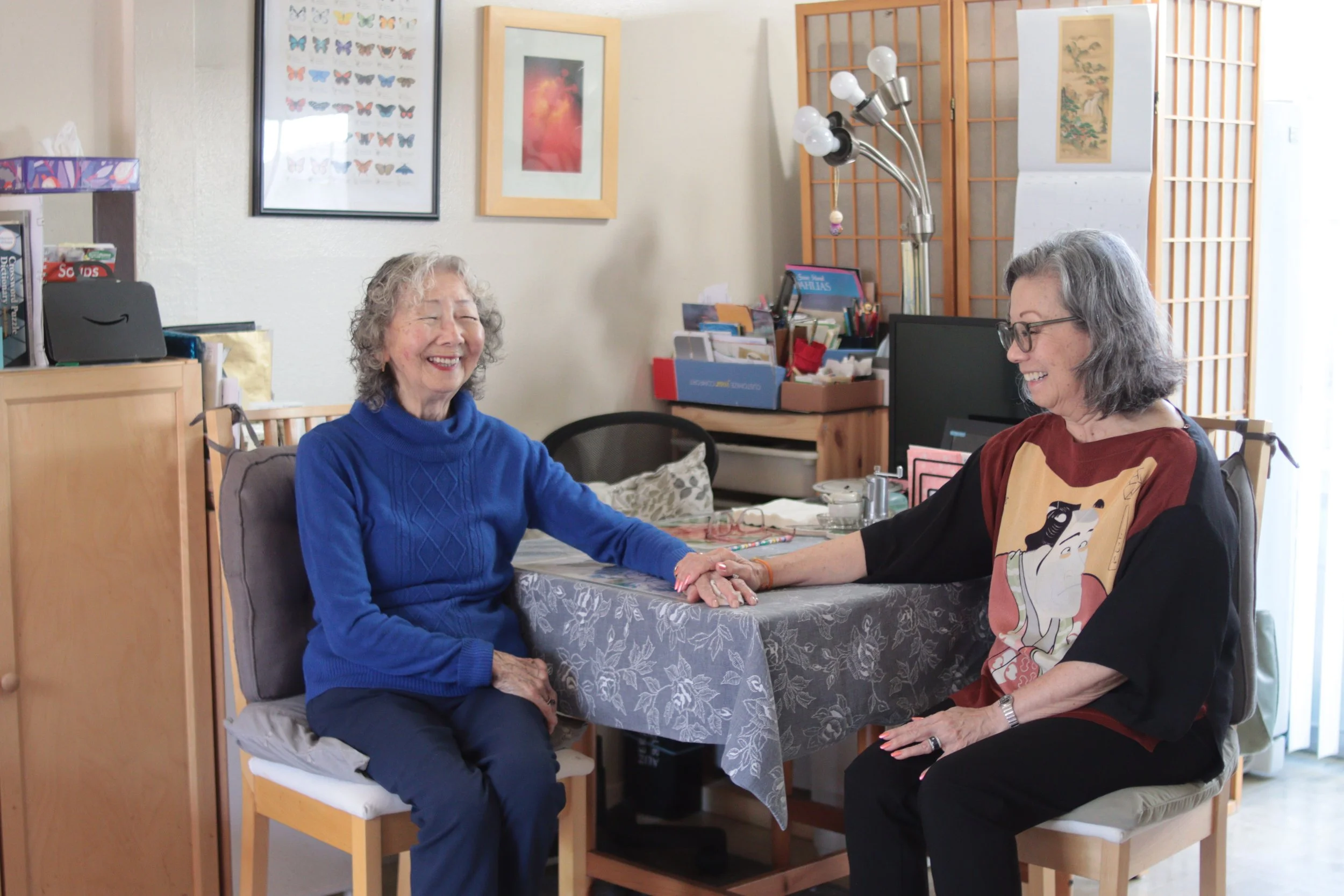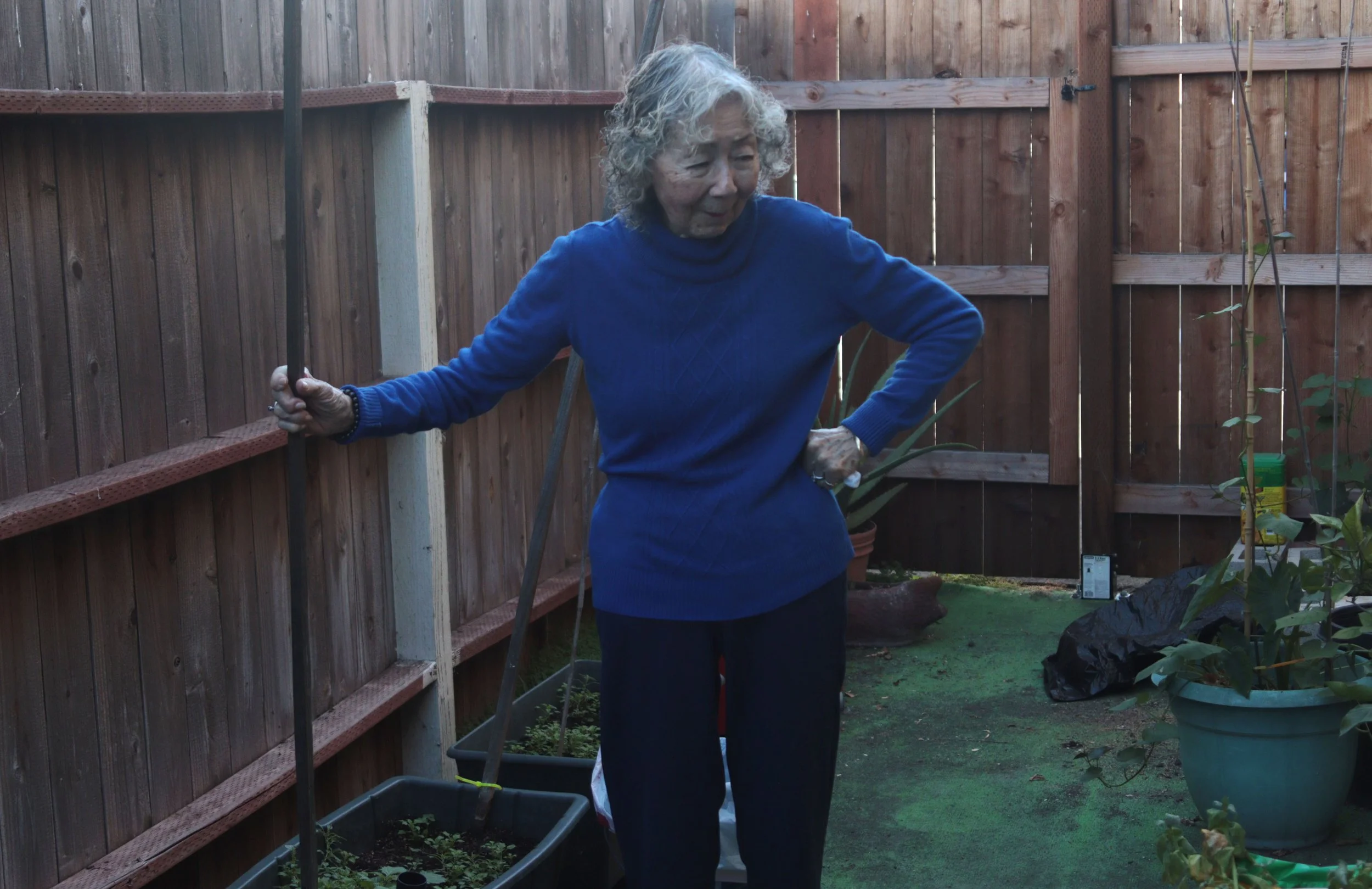Buried Years
In 2024-25, The Venice Arts’ Advanced Photography students embarked on a special project, examining archival materials, visiting historical sites, conducting interviews, and creating artwork in response to the forced removal and incarceration of Japanese-Americans in Los Angeles during WWII.
Blocks from the Venice Arts campus, is the Venice Japanese Memorial Monument, marking the historic departure point to the Manzanar incarceration camp in the Eastern Sierras. Our students followed the same route, traveled to Manzanar, stayed overnight, and photographed throughout the National Historic Site.
The resulting efforts of this 24 week project was an exhibition at the Venice Heritage Museum and a zine; a creative effort to connect this history to the contemporary civil liberty threats and the personal lives of the participating students.
Venice
The Venice Japanese American Memorial Monument (VJAMM) sits on the northwest corner of Venice and Lincoln Boulevards. The 9′ 6″ tall solid black granite obelisk marks the spot where some 1,000 persons of Japanese ancestry from Venice, Santa Monica, and Malibu lined up with only what they could carry in April, 1942. Buses transported them directly to Manzanar. It reads, in part:
May this monument remind us to be forever vigilant about defending our constitutional rights. The powers of government must never again perpetuate an injustice against any group based solely on ethnicity, gender, sexual orientation, race, or religion.
SAWTELLE
Sawtelle, located in West Los Angeles, is part of what’s known today as Japantown. After the bombing of Pearl Harbor, the Japanese American community here—like so many others—faced forced removal and incarceration. Many local businesses disappeared, and families were uprooted.
Yet some legacies endure. Yamaguchi Nursery, one of the oldest nurseries in Sawtelle, still operates today, symbolizing resilience and the importance of community support. The Buddhist Temple of Sawtelle also continues to play a central role in preserving cultural and spiritual identity, serving as a hub for generations.
In more recent years, new voices have emerged. Eric Nakamura, founder of Giant Robot, has established two locations in Sawtelle. His business provides a platform for contemporary Japanese American and Asian American artists, contributing to the evolving culture of this historic neighborhood while honoring its roots.
Manzanar
During World War II, over 120,000 people of Japanese ancestry were forcibly incarcerated by the U.S. government—two-thirds of whom were American citizens. Manzanar was one of ten concentration camps, located in the remote Owens Valley of east-central California. At its peak, Manzanar held 10,046 people, most of whom were uprooted from the Los Angeles area.
When we visited the site in the winter of 2024, we were struck by the harshness of the environment: bitterly cold, windy, dry, and dusty. Inside the reconstructed barracks, living conditions were overcrowded and bleak. This unforgiving setting underscored the extraordinary strength and resilience of the Japanese Americans who endured forced removal and incarceration.
Mary namura
Mary Nomura, known as the "Songbird of Manzanar," was only 16 years old when she and her family were incarcerated. From a young age, Mary had a deep love for music. She would sit in on her mother’s singing lessons and learn the songs herself. Along with her older brother and sisters, she was sent to Manzanar.
Her brother, the eldest, took on the responsibility of caring for the family, something Mary remains deeply grateful for. Despite the dehumanizing circumstances, Mary found strength through music. Her singing brought people together, providing comfort, hope, and a sense of unity to a community living through unimaginable hardship. Her story is a powerful reminder that even in the worst of times, people can create beauty and connection.
Featured Artists: Amber, Brian, Camila, Carol, Eduardo, Jocelyn, Lucy, Tabitha, Yaretzi
Buried Years at venice heritage museum
May 31 through June 2025
Funding provided by the State of California



